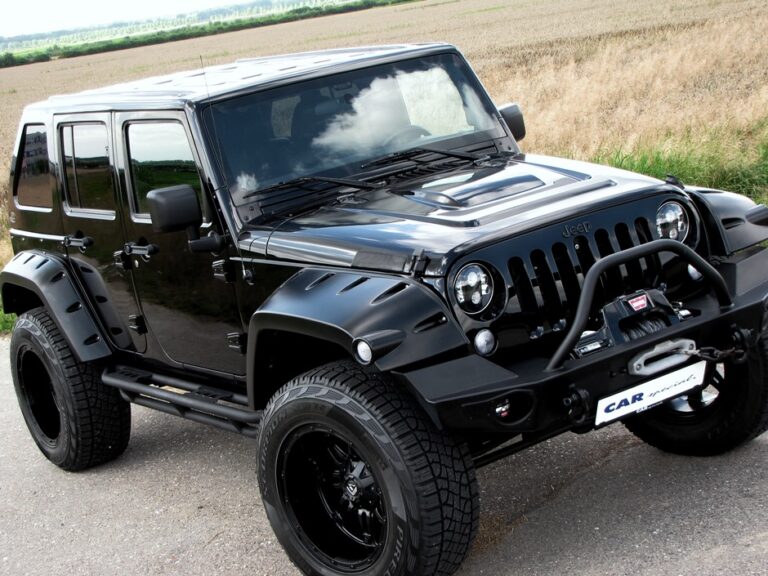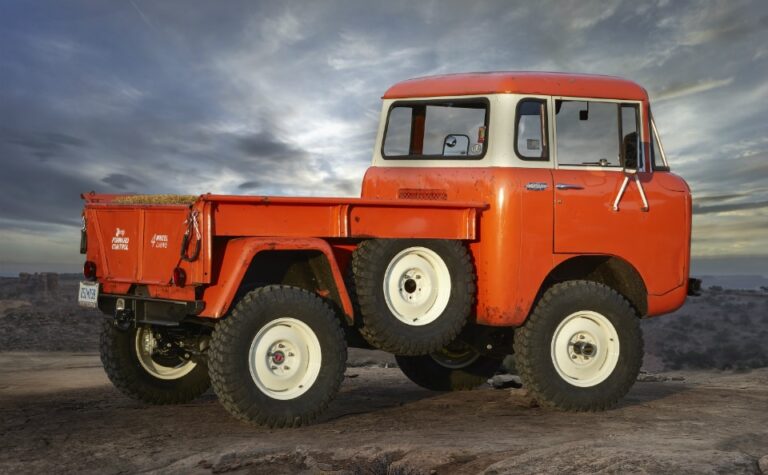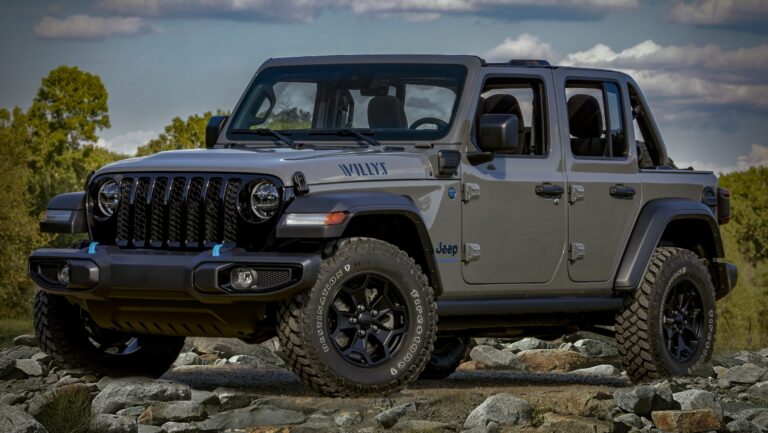How Much Jeep Wrangler Cost: A Comprehensive Guide to Owning the Icon
How Much Jeep Wrangler Cost: A Comprehensive Guide to Owning the Icon jeeps.truckstrend.com
The Jeep Wrangler stands as an enduring symbol of adventure, freedom, and unparalleled off-road capability. Its distinctive silhouette, removable doors, and open-air driving experience have captivated enthusiasts for decades. However, for many aspiring owners, the burning question isn’t just "What can it do?" but "How much does a Jeep Wrangler cost?" The answer, as with any significant vehicle purchase, is more nuanced than a single number. It encompasses not only the initial purchase price but a spectrum of ongoing expenses, optional upgrades, and long-term ownership considerations.
Understanding the true cost of a Jeep Wrangler is crucial for prospective buyers. It empowers you to make an informed decision, budget effectively, and ultimately enjoy the legendary experience without financial surprises. This comprehensive guide will delve into every facet of Jeep Wrangler ownership costs, from the sticker price of a brand-new model to the long-term expenses and considerations that shape your total investment.
How Much Jeep Wrangler Cost: A Comprehensive Guide to Owning the Icon
Understanding the MSRP: New Wrangler Models and Trim Levels
The Manufacturer’s Suggested Retail Price (MSRP) is your starting point for a new Jeep Wrangler. However, the Wrangler lineup is incredibly diverse, with various trim levels, body styles, and engine options, all of which significantly impact the final price.
1. Body Styles: 2-Door vs. 4-Door (Unlimited)
Historically, the Wrangler was exclusively a 2-door vehicle. Today, the 4-door "Unlimited" model dominates sales, offering more passenger room and cargo space. The 4-door version typically carries a higher MSRP than its 2-door counterpart, often by $3,000 to $5,000, due to its larger size and increased utility.
2. Core Trim Levels and Their Price Impact:
Jeep offers a wide array of trim levels, each designed to cater to different needs and budgets, from basic functionality to premium off-road prowess or luxury. Here’s a breakdown of common trims and their approximate starting MSRPs (for a 2024 model year, prices are subject to change and may vary by region):
- Sport (2-Door: ~$32,000; 4-Door: ~$37,000): This is the entry-level trim, offering the quintessential Wrangler experience without many frills. It’s the most affordable way to get into a new Wrangler, providing basic off-road capability and the iconic look.
- Willys (2-Door: ~$35,000; 4-Door: ~$40,000): Building on the Sport, the Willys pays homage to the original military Jeeps. It adds more aggressive off-road tires, a limited-slip rear differential, rock rails, and a black grille, enhancing its trail readiness without a massive jump in price.
- Sahara (4-Door Only: ~$48,000): The Sahara shifts focus slightly towards comfort and refinement while retaining capability. It typically includes body-color fender flares, premium interior touches, larger infotainment screens, and more convenience features, appealing to those who want a blend of adventure and daily drivability.
- Rubicon (2-Door: ~$49,000; 4-Door: ~$53,000): The Rubicon is the undisputed king of off-road performance in the Wrangler lineup. It comes standard with heavy-duty Dana 44 axles, electronic locking front and rear differentials, a disconnecting front sway bar, and a lower transfer case gear ratio, making it incredibly capable right off the showroom floor. Its specialized equipment commands a higher premium.
- High Altitude (4-Door Only: ~$60,000+): This premium trim elevates the Sahara’s luxury offerings with body-color bumpers, quilted leather seats, larger wheels, and advanced technology features, pushing the Wrangler into a more upscale segment.
- Rubicon 392 (4-Door Only: ~$92,000+): At the top of the range sits the beastly Rubicon 392, powered by a roaring 6.4L V8 engine. It offers incredible on-road acceleration paired with extreme off-road capability, making it the most expensive and powerful production Wrangler.
- Wrangler 4xe (Plug-in Hybrid): The 4xe line introduces plug-in hybrid technology to the Wrangler, offering improved fuel economy and instant electric torque. Available across several trims (Sahara 4xe, Willys 4xe, Rubicon 4xe, High Altitude 4xe), these models typically start significantly higher than their gasoline counterparts, ranging from ~$52,000 to ~$70,000+, reflecting the advanced powertrain technology.
3. Engine Options:
Beyond the standard 3.6L Pentastar V6, you can opt for a 2.0L turbocharged 4-cylinder (often standard on higher trims or 4xe), or the potent 6.4L V8 in the 392. Each engine choice impacts the base price and, subsequently, fuel efficiency.
Beyond the Sticker Price: Optional Features and Packages
The MSRP is just the beginning. Most Wranglers sold leave the lot with a host of optional features and packages that can significantly increase the final price. These add-ons cater to customization, comfort, safety, and enhanced capability.
- Roof Options: While a soft top is standard on some trims, many buyers opt for a hardtop (either black or body-color), which adds anywhere from $1,500 to $2,500. Power-retractable "Sky One-Touch" powertops are even more expensive, often adding $4,000 or more.
- Technology & Safety Groups: These packages bundle features like larger Uconnect touchscreens (8.4-inch or 12.3-inch), navigation, Alpine premium audio, adaptive cruise control, blind-spot monitoring, and parking sensors. These can easily add $1,000 to $3,000.
- Premium Seating: Leather-trimmed seats, heated seats, and heated steering wheels are popular upgrades, adding several hundred to a few thousand dollars.
- Wheel and Tire Upgrades: Different wheel designs and more aggressive all-terrain or mud-terrain tires are common options, impacting both aesthetics and performance, often costing $500 to $1,500.
- Advanced Off-Road Features: While standard on the Rubicon, some lower trims might offer limited-slip differentials, rock rails, or heavy-duty winches as optional extras.
- Appearance Packages: Special edition colors, decals, or exterior accents can add a few hundred dollars.
- Destination Charge: A mandatory fee (typically around $1,895) covers the cost of transporting the vehicle from the factory to the dealership. This is added to the MSRP.
- Dealer-Installed Accessories: Many dealerships offer lift kits, larger tires, aftermarket bumpers, and lighting packages that are installed on-site, adding thousands to the total. Be aware that these might not always be covered by the factory warranty.
Practical Advice: Prioritize your needs. Do you truly need the premium audio, or would you prefer to save for aftermarket modifications? Research packages carefully to avoid paying for features you don’t need.
The Pre-Owned Market: Value and Depreciation
One of the most appealing aspects of Jeep Wrangler ownership is its legendary resale value. Wranglers depreciate slower than many other vehicles, meaning they hold their value exceptionally well. This makes the used market a highly viable option for those looking to save money.
- Strong Resale Value: A well-maintained Wrangler, especially a Rubicon, can command strong prices even after several years. This is due to high demand, its unique capabilities, and its reputation for durability.
- Factors Affecting Used Prices:
- Year and Mileage: Newer models with lower mileage will be more expensive.
- Trim Level: Rubicons and higher trims retain their value better than Sport models.
- Condition: Excellent mechanical and cosmetic condition fetches higher prices. Rust, especially on the frame, can significantly devalue a Wrangler.
- Modifications: Aftermarket modifications can be a double-edged sword. While some (like quality lift kits or steel bumpers) can add value, others (poorly installed mods, excessive customization) might deter buyers or not add any value.
- Accident History: A clean title and accident-free history are crucial.
- Pros of Buying Used:
- Significant Savings: You can often get a higher trim level or more features for the price of a new base model.
- Existing Modifications: Many used Wranglers already have desirable (and expensive) aftermarket parts installed, saving you money and effort.
- Avoid Initial Depreciation: The steepest depreciation hit occurs in the first few years.
- Cons of Buying Used:
- Unknown History: Unless it’s Certified Pre-Owned (CPO), you might not know the full history of the vehicle, especially if it was heavily off-roaded.
- Wear and Tear: Components might be worn, requiring immediate maintenance.
- Limited Warranty: Factory warranties may be expired or limited.
How to Estimate Used Prices: Utilize online marketplaces (Autotrader, Cars.com, CarGurus), dedicated Jeep forums, and valuation tools (Kelley Blue Book, Edmunds) to research comparable models in your area. Always get a pre-purchase inspection from an independent mechanic, especially for modified Wranglers.
Long-Term Ownership Costs: Beyond the Purchase
The initial purchase price is only part of the equation. Understanding and budgeting for ongoing ownership costs is essential for a stress-free Wrangler experience.
- Fuel Economy: Wranglers, especially those with larger tires or lift kits, are not known for their fuel efficiency.
- 3.6L V6: ~17-20 MPG combined.
- 2.0L Turbo: ~20-22 MPG combined.
- Rubicon 392: ~13 MPG combined.
- 4xe (PHEV): Offers up to ~21 miles of all-electric range, then ~20 MPG combined on gasoline. This can significantly reduce fuel costs if you have access to charging and drive mostly short distances.
- Actionable Insight: Factor in your typical driving habits and local fuel prices. If you commute long distances, a 4xe might offer substantial savings.
- Insurance: Jeep Wrangler insurance premiums can be higher than average due to their popularity, high theft rates, and the perception of being driven by younger, more adventurous drivers. Factors affecting your rate include:
- Trim Level: Rubicons and 392s are often more expensive to insure.
- Driver History: Your driving record, age, and location.
- Coverage Levels: Comprehensive and collision coverage are highly recommended.
- Actionable Insight: Get insurance quotes before finalizing your purchase.
- Maintenance: Routine maintenance costs are generally comparable to other SUVs (oil changes, tire rotations, fluid checks). However, due to its body-on-frame construction and off-road nature, some components might require more attention:
- Tires: Off-road tires are more expensive than standard road tires and may wear faster, especially if not rotated regularly. A set can cost $1,000-$2,000+.
- Alignment: Off-roading can throw off alignment, requiring more frequent adjustments.
- Suspension Components: If you frequently off-road, components like ball joints, tie rods, and shock absorbers might need replacement sooner.
- Repairs: While generally reliable, some common Wrangler issues can arise, such as "death wobble" (though often fixable with proper maintenance/alignment), rust on older models, or specific electrical glitches. Specialized off-road components can also be more expensive to repair or replace if damaged on the trail.
- Modifications & Upgrades: This is where a significant portion of a Wrangler owner’s budget often goes. The aftermarket industry for Wranglers is enormous.
- Lift Kits: $500 (budget spacer lift) to $5,000+ (high-end suspension systems).
- Larger Tires & Wheels: $1,500 to $4,000+ for a set of five.
- Steel Bumpers & Winches: $500 to $2,000+ per bumper; $500 to $1,500+ for a winch.
- Lighting: LED lights, light bars, auxiliary lights: $100 to $1,000+.
- Other: Roof racks, rock sliders, differential covers, interior accessories, and more.
- Actionable Insight: Budget a significant amount for modifications if you plan to personalize your Wrangler. Many owners spend thousands, or even tens of thousands, over the years.
- Taxes and Fees: Don’t forget sales tax (varies by state), registration fees, and annual license plate renewal fees, which are based on the vehicle’s purchase price and type.
Financing Your Wrangler: Loans and Leases
Most people don’t pay cash for a new Wrangler. Understanding financing options is key to managing the cost.
- Loans:
- Down Payment: A larger down payment reduces your monthly payments and the total interest paid.
- Interest Rate: Your credit score heavily influences the interest rate. A difference of a few percentage points can mean thousands over the life of the loan.
- Loan Term: Longer terms (e.g., 72 or 84 months) result in lower monthly payments but higher total interest paid. Shorter terms (36 or 48 months) save on interest but have higher monthly payments.
- Leasing:
- Pros: Lower monthly payments than a loan, access to a new vehicle every few years, no concern about resale value.
- Cons: Mileage restrictions (problematic for off-roaders or long commuters), no equity build-up, penalties for excessive wear and tear, and most importantly, no customization allowed (as you don’t own the vehicle). Leasing a Wrangler is generally not recommended for those who wish to heavily modify their vehicle.
Practical Advice: Shop around for the best loan rates from banks and credit unions before visiting the dealership. Understand the total cost of the loan, not just the monthly payment.
Practical Advice and Actionable Insights
- Define Your Needs: Do you need extreme off-road capability (Rubicon) or a stylish daily driver with some weekend trail potential (Sahara, Willys)? Overbuying features you won’t use adds unnecessary cost.
- Consider Certified Pre-Owned (CPO): A CPO Wrangler from a Jeep dealership offers the peace of mind of a multi-point inspection and an extended warranty, bridging the gap between new and purely used.
- Negotiate: Always negotiate the price, whether new or used. Research market values and be prepared to walk away if the deal isn’t right.
- Bundle and Save: If you plan on adding certain accessories (e.g., specific tires, winches), see if the dealer can include them in the purchase price or offer a package deal.
- DIY vs. Professional Installation: For modifications, consider what you can safely install yourself to save on labor costs, but know your limits.
- Budget for the "Fun Factor": Don’t forget to allocate funds for trail permits, off-road recovery gear, and potential club memberships.
Price Table: Estimated 2024 Jeep Wrangler Costs
| Trim Level | Body Style | Approx. Starting MSRP | Key Features / Notes | Typical Price Range (w/ common options) |
|---|---|---|---|---|
| Sport | 2-Door | $32,000 | Basic, iconic Wrangler experience. | $35,000 – $45,000 |
| 4-Door (Unlimited) | $37,000 | More space, practical for families. | $40,000 – $50,000 | |
| Willys | 2-Door | $35,000 | Enhanced off-road (tires, limited-slip diff), heritage styling. | $38,000 – $48,000 |
| 4-Door (Unlimited) | $40,000 | $43,000 – $53,000 | ||
| Sahara | 4-Door (Unlimited) | $48,000 | More refined, premium interior, body-color flares. | $50,000 – $60,000 |
| Rubicon | 2-Door | $49,000 | Ultimate off-road capability (lockers, sway bar disconnect, Dana 44s). | $52,000 – $65,000 |
| 4-Door (Unlimited) | $53,000 | $56,000 – $70,000 | ||
| Sahara 4xe | 4-Door (Unlimited) | $52,000 | Plug-in Hybrid (PHEV), electric range, improved fuel economy. | $55,000 – $65,000 |
| Rubicon 4xe | 4-Door (Unlimited) | $62,000 | PHEV with Rubicon’s extreme off-road features. | $65,000 – $75,000 |
| High Altitude | 4-Door (Unlimited) | $60,000 | Luxury-focused, premium materials, larger wheels, advanced tech. | $63,000 – $75,000 |
| High Altitude 4xe | 4-Door (Unlimited) | $70,000 | Top-tier PHEV with luxury and advanced features. | $73,000 – $80,000+ |
| Rubicon 392 | 4-Door (Unlimited) | $92,000 | 6.4L V8 engine, extreme power and off-road capability. | $95,000 – $100,000+ |
| Destination Charge | N/A | ~$1,895 | Mandatory fee for vehicle transport. | N/A |
Note: All prices are approximate MSRP for 2024 models and exclude taxes, title, registration, and dealer fees. Actual transaction prices may vary based on negotiation, market demand, and chosen options.
Frequently Asked Questions (FAQ) about Jeep Wrangler Cost
Q1: Is the Jeep Wrangler expensive to maintain?
A1: Routine maintenance is comparable to other SUVs. However, specialized off-road components, larger/more aggressive tires, and potential repairs from aggressive off-roading can make it more expensive than a standard passenger car. Older models may also require more attention for common issues like rust.
Q2: Does the Jeep Wrangler hold its value well?
A2: Yes, the Jeep Wrangler is renowned for its excellent resale value. It consistently ranks among the top vehicles for retaining value, especially higher trims like the Rubicon.
Q3: What’s the cheapest new Jeep Wrangler model?
A3: The 2-door Sport trim is typically the most affordable new Jeep Wrangler, with a starting MSRP around $32,000.
Q4: Is the Wrangler 4xe worth the extra cost?
A4: The 4xe’s value depends on your usage. If you have access to charging and your daily commute or errands are within its electric range (around 21 miles), the fuel savings can be substantial, making the higher initial cost worthwhile over time. It also offers impressive instant torque for off-roading.
Q5: How much do common Wrangler modifications cost?
A5: This varies widely. A basic lift kit can be $500, but a high-quality suspension system can exceed $5,000. A set of larger tires and wheels can easily be $1,500-$4,000+. Steel bumpers and winches can add another $1,000-$3,000+. Many owners spend thousands customizing their Wranglers.
Q6: Why is Jeep Wrangler insurance so high?
A6: Insurance premiums can be higher due to several factors: the Wrangler’s popularity (making it a target for theft), its off-road capabilities (suggesting higher risk of accidents), and repair costs for specialized components. Your driving record, age, location, and the specific trim level also play a significant role.
Conclusion
The Jeep Wrangler represents more than just a vehicle; it’s a lifestyle. While the question "How much does a Jeep Wrangler cost?" can’t be answered with a single number, understanding the multifaceted expenses involved is the first step toward embracing that lifestyle responsibly. From the initial MSRP of diverse trim levels and optional add-ons to the strong resale value, ongoing fuel and maintenance, and the exciting world of modifications, every aspect contributes to the total cost of ownership.
By thoroughly researching, budgeting for both upfront and long-term expenses, and making informed decisions about new versus used, trim levels, and desired features, you can confidently embark on your Wrangler adventure. Remember, the true value of a Jeep Wrangler extends far beyond its price tag, residing in the unparalleled experiences, the vibrant community, and the freedom it offers to explore the world, on or off the beaten path.


